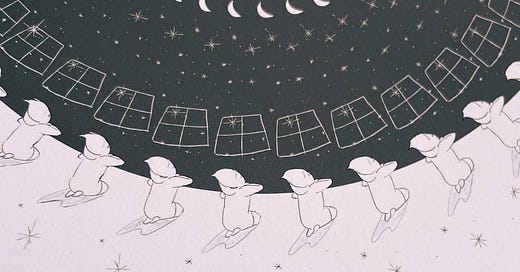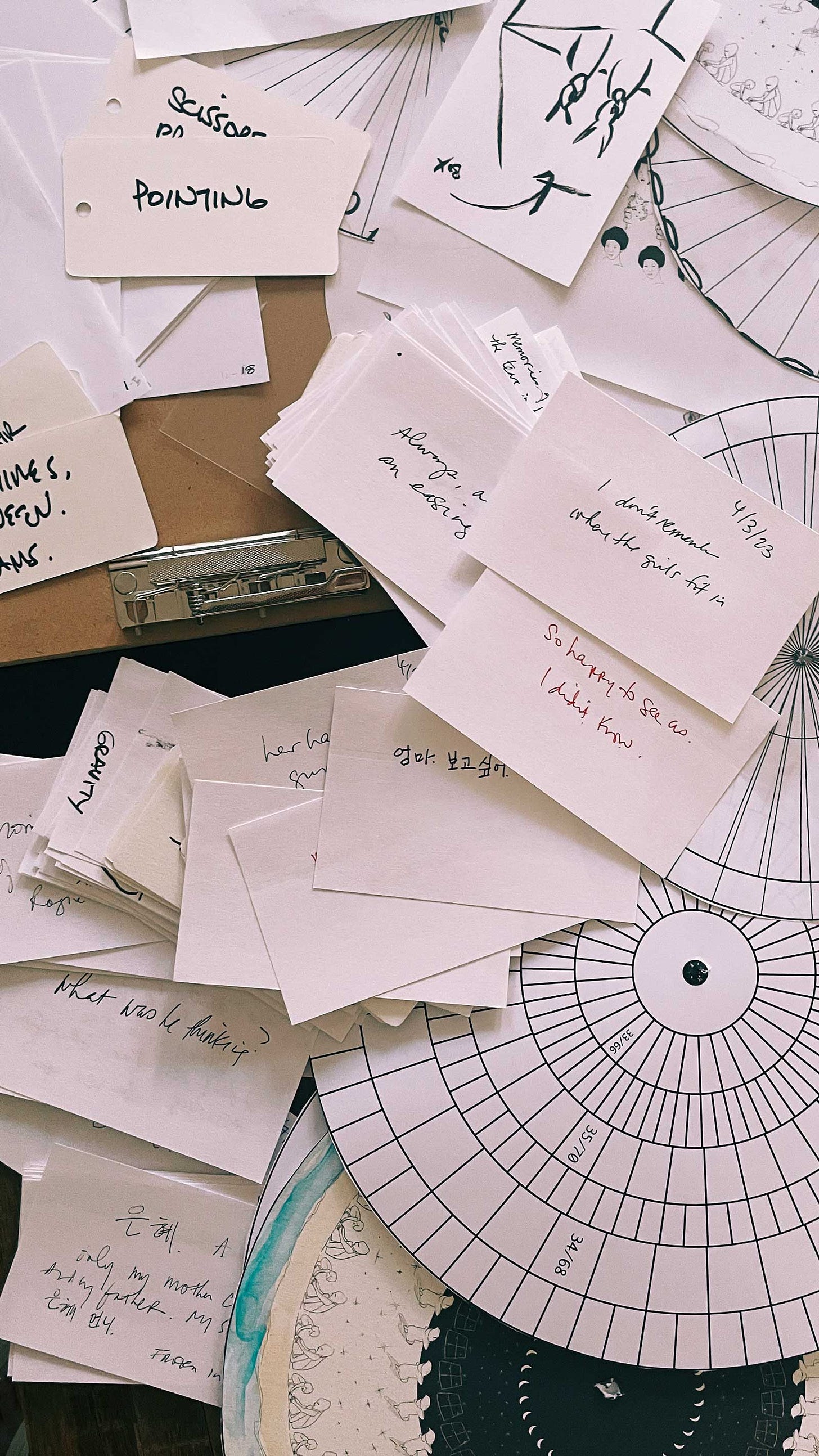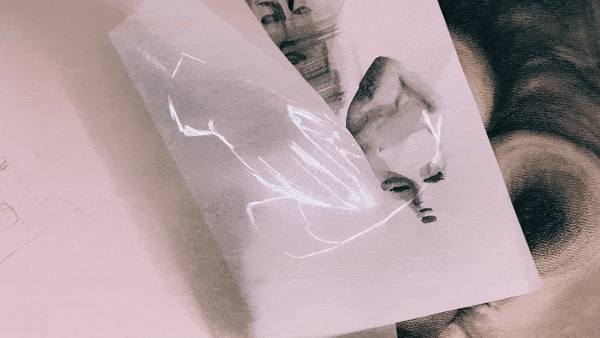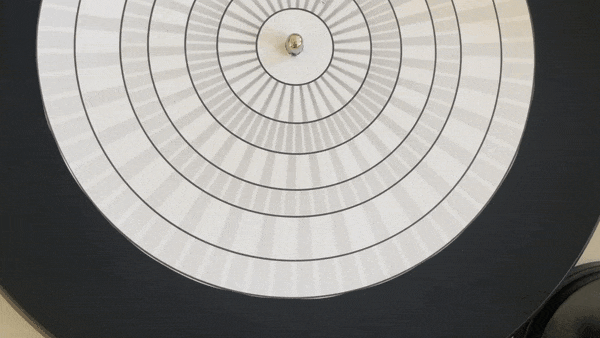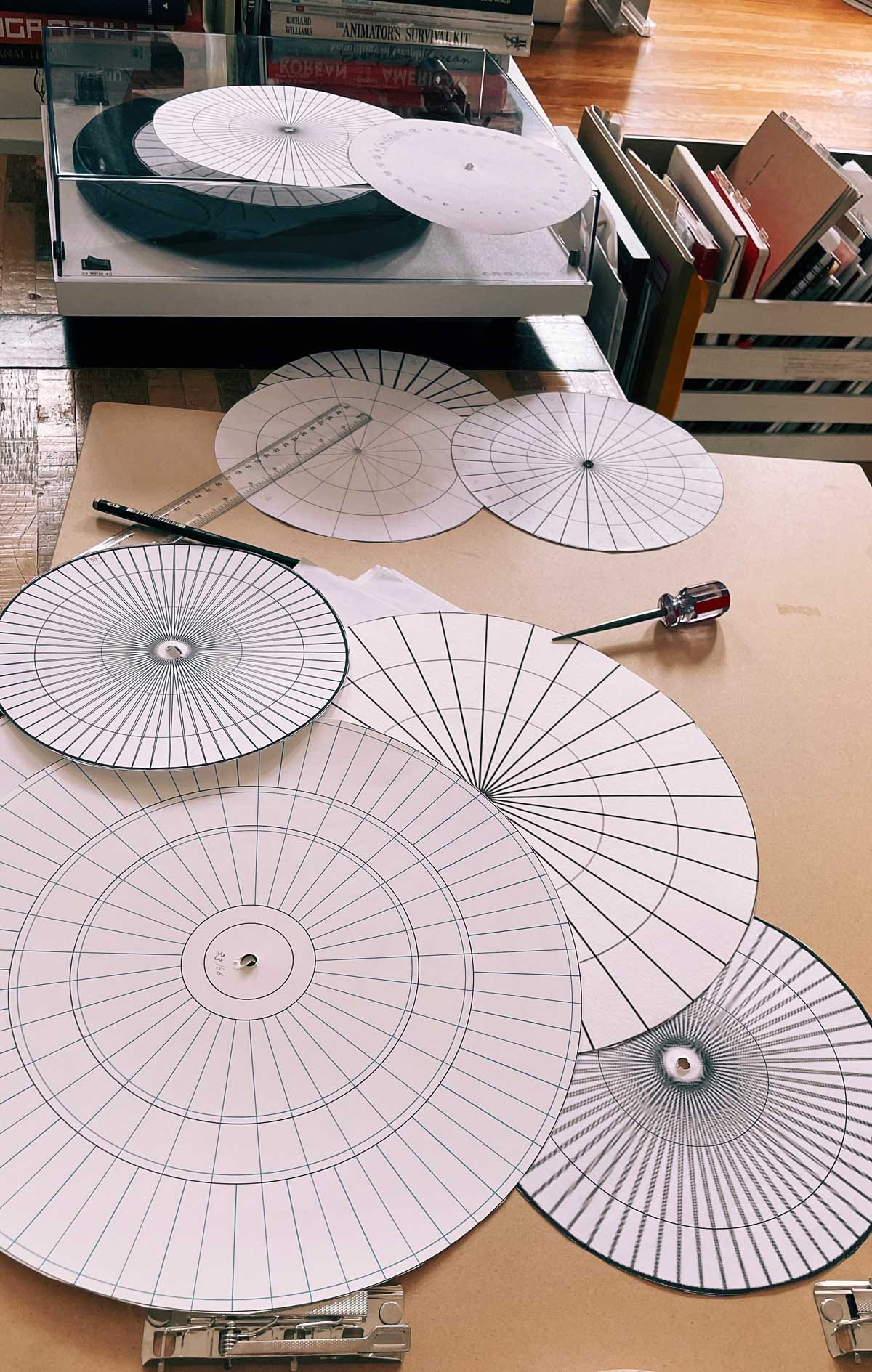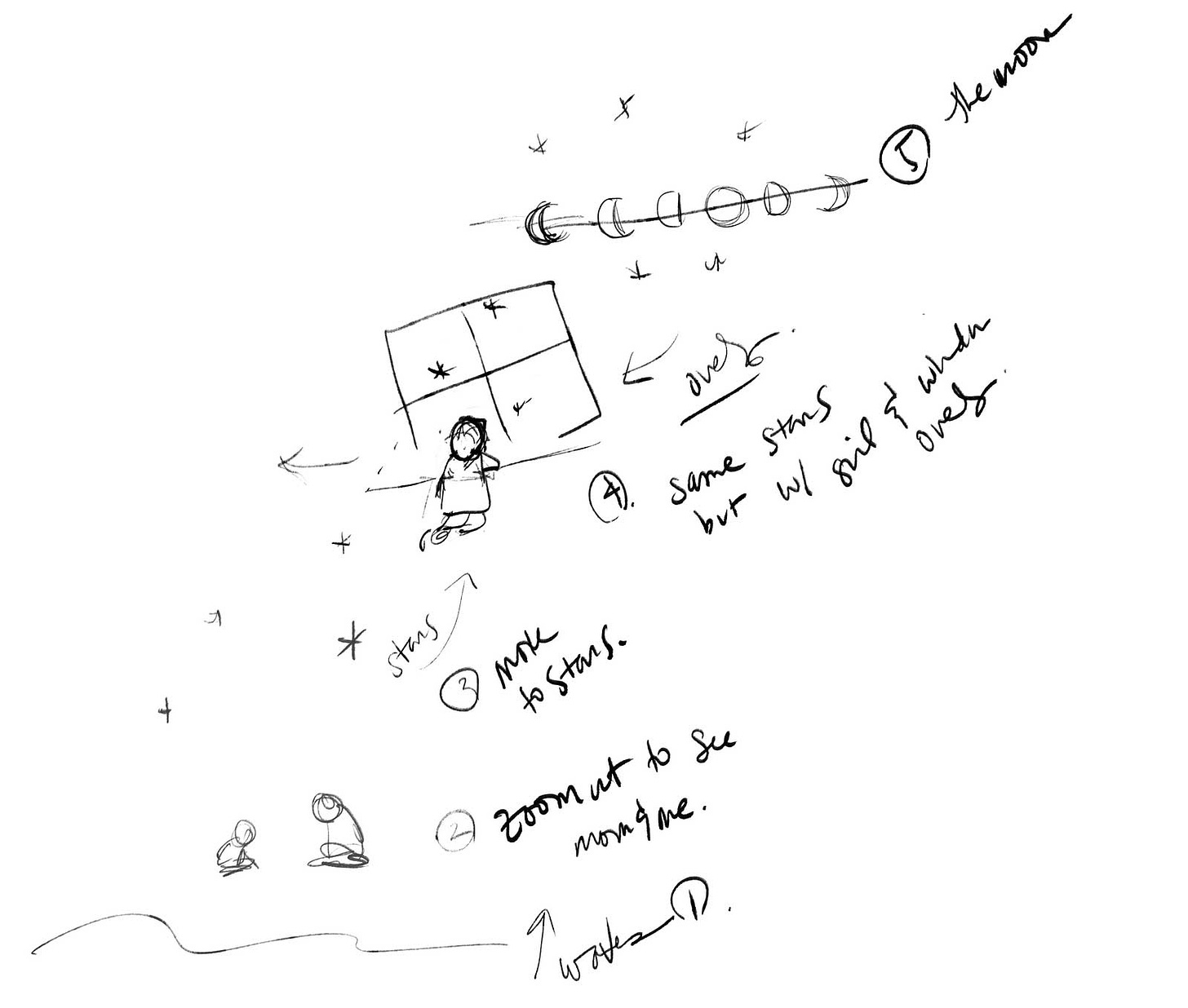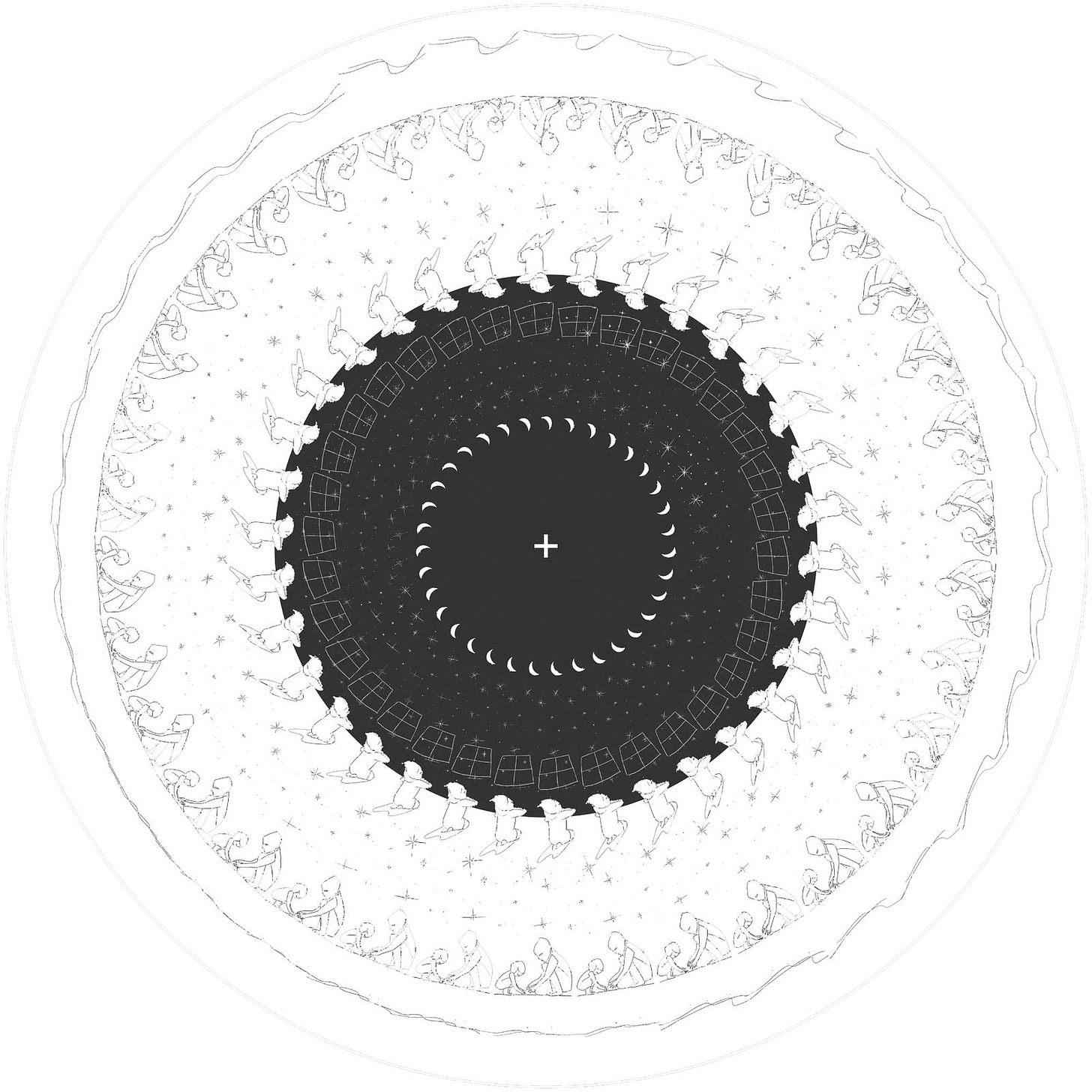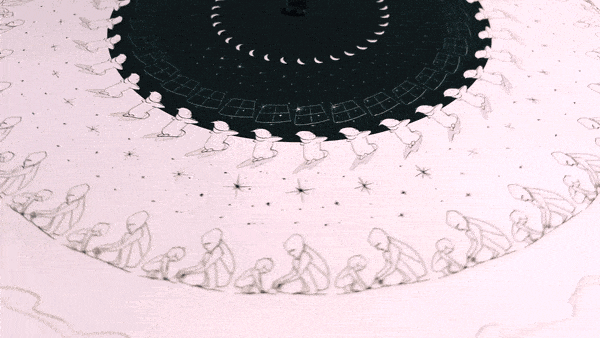48. Flicker
How stories come alive. Animating on a turntable, the magic of hidden forms, the liberating vastness of constraints.
Suddenly, the head of one creature stood out clearly. It lived for a second, then faded as another appeared. The spaghetti lines were no longer a confused two-dimensional pattern. Rather, they became a forest or a bramble patch that concealed and then revealed the animals within. / By firelight, a secret of the cave painters was exposed. In the space of a few moments, I saw cuts and dissolves, change and movement. Forms appeared and disappeared. Colors shifted and changed. In short, I was watching a movie.
—Edward Wachtel, “The First Picture Show: Cinematic Aspects of Cave Art”
Some time ago, a friend passed along a Tweet about cave art proto-animation and I’m still thinking about it. Last week I was able to read the full article, and found myself ruminating about the beauty of hidden things, and about seeing differently what meets the eye.
The past few weeks I leaned into materiality and novel modes. Partly, I’m occupied by plans for an upcoming exhibit with the Korean American Artist Collective of which I’m a new member, but also, moving away from strictly digital—and business-as-usual—has felt organic given my current headspace.
I’ve been embracing these instincts by, for example, writing on index cards (versus in a journal)…
focusing on the hyper-distilled, stand-alone image as story…
and working with unfamiliar tools such as charcoal, vellum, and the projector…
Lastly, I’ve been making phonotropes (inspired by Tess Martin’s wonderful tutorial on Vimeo): simple looping animations on paper disc, run on a turntable.
To the naked eye, the animation on a spinning disc presents a blur:
Through a camera lens at high shutter speed and specific frame rate, though, a story emerges. By varying the number of frames, I can also control whether the sequence plays in place, or drifts counter/clockwise:
It’s not an exact science, by the way, to figure out the number of frames + frame rate for an animation to play in place. It could be because I’m using an iPhone app versus a DSLR. On top of that, there’s variance, however slight, between turntable speeds. In any case, it took trial and error to discover my personal magic combo: 34 frames at 26fps. (For Tess, who probably has a much nicer turntable, it’s 32 @24, just like math says it should be.)
Despite the trouble—maybe thanks to it—there’s something special about arriving at a story in this way. It’s like walking through a secret door to a sort of Narnia. Magical, a little poetic—and as satisfying as a puzzle piece falling into place.
Playing within these ostensibly tight constraints, too, has felt liberating. With boundaries clarified, distractions recede—and a strange vastness opens up. Possibilities come into focus. Everything feels like a beginning.
Overall, I’m struck by the way broken, fleeting images (the only way I’ve been able to hold things so far) fit together somehow, and what this could mean as narrative——however fragmented and non-linear.
Members, a 1 minute rough cut to music by talented friend, designer, and artist Able Parris, below.
Everyone else, see you next time.

